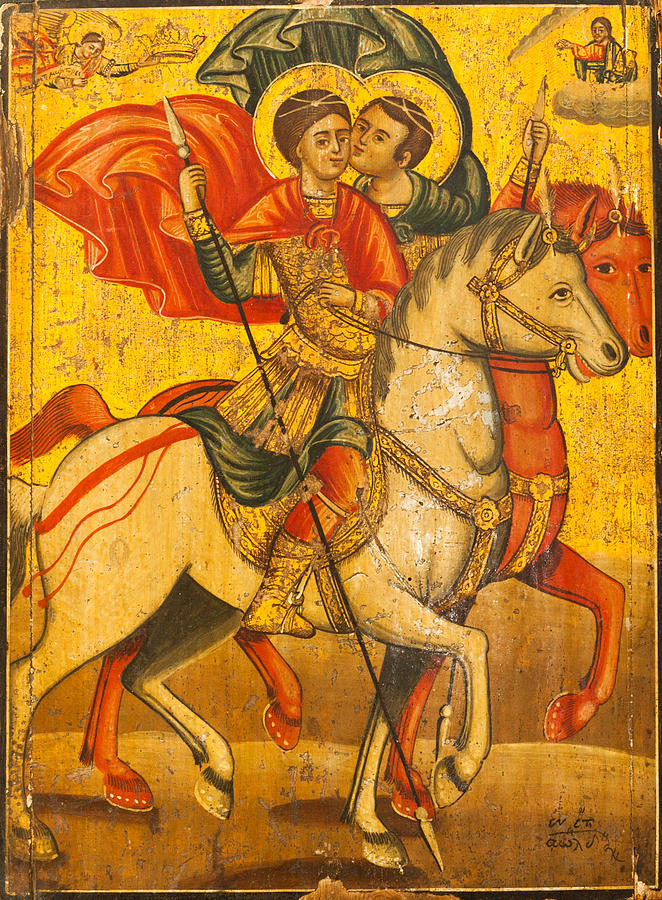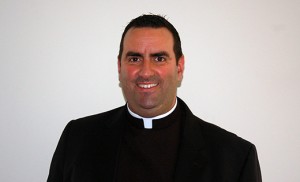

Similarly, the blue garment of the central angel is opaque and built up with layers, but the two side angels’ garments are transparent with touches of white. The angels on the sides, in contrast, are drawn with a gentle, calm movement. In the Trinity icon, the drawing of the central angel’s garment is very geometric. His intention was to create harmony and unity through perfect contours and lines. For Rublev, the drawing-design dominated the process of icon writing. The essential nature of the icon is that it is the expression of Christian revelation. Their transparency reflects harmony of matter and mind. Rublev’s icons appear to be more natural than those of the Palaeologue period. The term “dymon pisano”, meaning transparent like a cloud”, is sometimes used to describe this technique.

In the icon of the Trinity, Rublev preferred transparent colors in blue-green tones that he combined with the technique of scumbling to achieve a luminous presence that also speaks to the heavenly nature of the three angels.

Michael and Christin… on The Worldview of an Icono… Valerie Smith on The Worldview of an Icono… View Christinesimoneauhales’s profile on YouTube.View Christine Simoneau Hales’s profile on LinkedIn.View Christinesimoneauhales’s profile on Pinterest.View christinesimoneauhales’s profile on Instagram.View Heavensvisions’s profile on Twitter.View Christine Hales Art/Icons’s profile on Facebook.The period from the 12th to … Continue reading Novgorod Icons Michael Halesįollow American Association of Iconographers on Social Media Novgorod is one of the oldest cities in Russia, dating from about 859 AD. Chapter four concludes the thesis by examining the spiritual/cultural device of Christendom as a redemptive discourse combatting European nationalism and racialism.Novgorod Icons What is so special about Novgorod Icons? In addition to being known for their beautiful colors and lively compositions, Novgorod Icons offer a rich history and background to the study of icon writing. This also entails examining the concept of self-sanctification, as well as how the Old Western Men responded to the violence of their century by inviting the supernatural into their lives. Chapter three forwards the Old Western notion of thinking ‘christianly’ by cultivating a divine indifference to worldly catastrophe. Chapter two focuses on an Old Western emphasis on the ‘More-Than-World’ within the world, one that was essentially sacramental, having come to reconcile reason with the imagination.

Chapter one describes the general concept of the Old Western Men, including how it confronted secular modernity by attempting to reconcile mind with matter as part of an intellectual via media (middle way) it will also examine the importance that some intellectuals invested in the concept of imaginative understanding. locates such a revival within a broader ‘religious mode of response’ to modernity, which such men of letters as Lewis believed to be fundamentally materialistic meaning that modernity denied the existence of an objective spiritual reality. identification of the Old Western Men to a broader spectrum of intellectuals and artists, previously referred to, more narrowly, as the ‘Catholic literary revival’. This thesis’s unique contribution to the current literature is that it applies Lewis’s. In this sense, he was in opposition to it as a Christian. Modernity, he believed, was essentially secular, unlike what had preceded it. Lewis, who used this term to assert the presence of a ‘Great Divide’ in history. This thesis forwards the concept of the ‘Old Western Men’, a phrase borrowed from C.


 0 kommentar(er)
0 kommentar(er)
